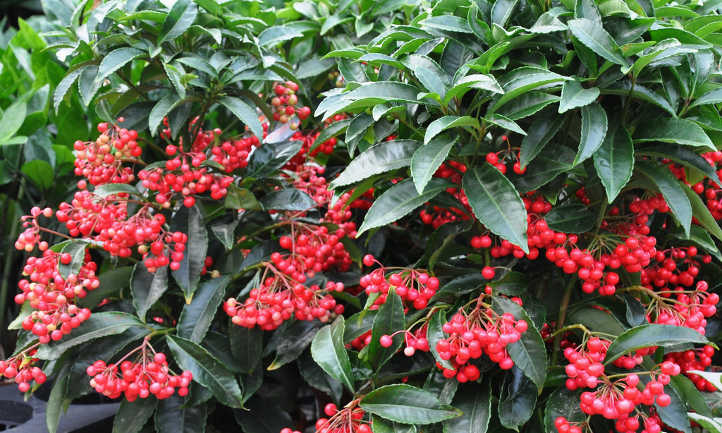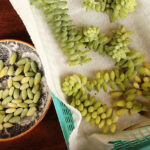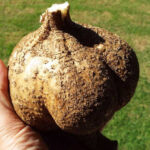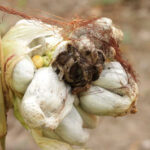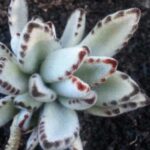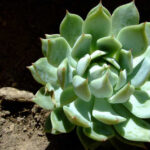Throughout the winter, the red, coral, or off-white berries of the ardisia plant can be seen. This has earned it the common name Christmas berry, and it can really be a bright spot in the winter landscape!
But it’s not limited to wintertime. This plant is evergreen in most climates that stay above 50 degrees. And throughout the spring and summer, some types provide bright, stunning flowers.
While considered invasive in some areas, the ardisia can be a phenomenal indoor plant. And it’s an easy grower, heightening its popularity indoors.
Ready to know more? I thought you might be. Let’s talk ardisia!
Ardisia Overview

| Common Name | Ardisia, Christmas berry, coral berry, spice berry, marlberry |
| Scientific Name | Ardisia crenata, Ardisia japonica, Ardisia solanacea, Ardisia elliptica, etc |
| Family | Primulaceae |
| Light | Bright, indirect light if grown indoors, partial shade outside |
| Water | Keep evenly moist at all times, not too wet or dry |
| Temperature | Optimal between 60-90 degrees, USDA zones 9-11 for most |
| Humidity | Tolerant of humidity but might need less watering if very humid out |
| Soil | Prefers well-drained soil, but tolerant of many soil types |
| Fertilizer | Balanced slow-release fertilizer monthly in spring & summer |
| Pests | Leafcutter ants, birds, raccoons, mealybugs |
| Diseases | Fungal root rot |
All About Ardisia
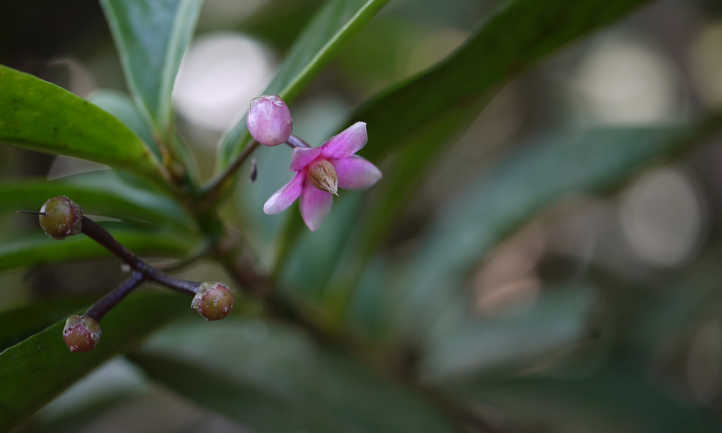
With over 700 species, the Ardisia genus is quite large. Native to the tropics, they can be found in various regions worldwide. Asia, Australia, and North and South America are areas where it’s widespread. The Pacific Islands is another region where it can be found.
But what is this genus made up of? Most of the different species are bushes or shrubs. Some forms make excellent ground cover plants, and others become trees. Most have leathery leaves, but the leaf shape varies.
The one defining factor of this diverse genus can be found in its flower. The stamens in the flower create a tube down its center. This occurs whether the flowers are clustered or spread out.
Evergreen if the weather is warm, these plants are actually quite beautiful. And they’re extremely easy to grow… maybe too easy!
Many To Choose From
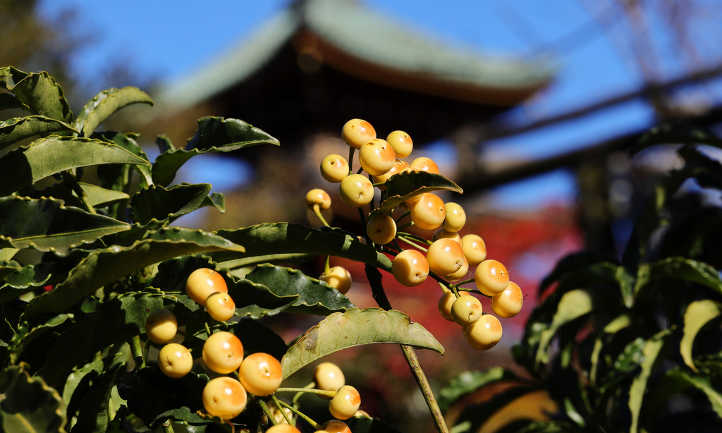
I can’t easily cover all 700-plus species in one article, so I’ve chosen a few varieties to highlight. These are among the most common forms of this warm weather-loving plant genus.
Ardisia crenata: Christmas berry, spiceberry, or Australian holly among other names. Often considered invasive in the US, especially in FL and TX, it’s still grown as a houseplant. Its red berries throughout the late fall & winter months are a great pop of color. This is the most widespread ardisia type in the world.
Ardisia elliptica: Called coralberry or duck’s eye. This tall species reaches heights of up to 16 feet. Its flowers are light pink, and its berries have a purplish hue.
Ardisia escallonioides: Also called the island marlberry. This tree grows up to fifty feet in height in the wild! In containers, it can be trained to stay around 3-5 feet. Its fruit is edible, but it’s reported to taste horrible.
Ardisia japonica: Commonly called marlberry. One of the 50 fundamental herbs in Chinese medicine, it’s a ground cover plant. It grows best in USDA zones 8-9. While it’s good as a cover and erosion preventer, it doesn’t like to be walked on.
Ardisia solanacea: The shoebutton ardisia. This tall shrub can grow to nearly 20 feet tall. Its branches are a distinctive reddish hue, and it produces showy pink flowers. This is a popular species for container growth.
Why Is Spiceberry So Invasive?
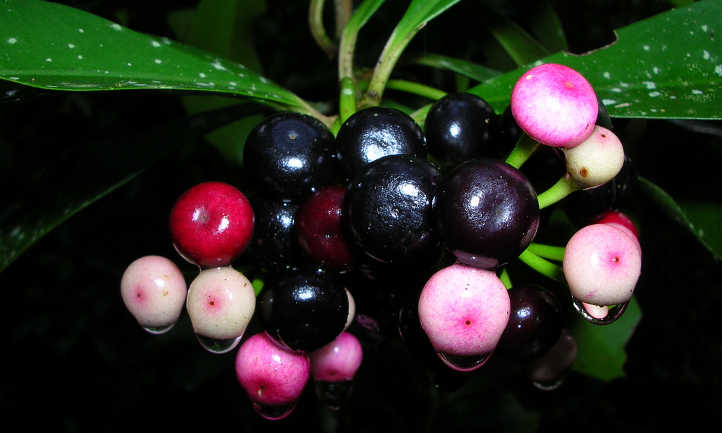
Why is the Christmas berry plant considered an invasive species in so many areas? Well, that has a lot to do with those berries.
The berries house tiny little seeds. And, unlike a lot of plants, these seeds germinate extremely well. It takes very little more than a patch of good soil and water to get the seeds to germinate.
But before the seeds can grow, they have to have a place to grow. And the coral ardisia berries serve another purpose. They are particularly appetizing to birds.
Birds gobble up the fruit as it comes ripe, and carry it off with them when they leave. When they excrete the seeds, they’re coated in what amounts to a bird fertilizer mix. This certainly won’t slow down their germination!
The only way to prevent the rapid spread of this plant is to remove the berries before they ripen. Bird netting may slow down access, if you want the red berries during the holidays. But if it grows well outside in your region, try to prevent its further spread.
Caring For Ardisia

To be truthful, these plants will practically take care of themselves. But if you’re trying to grow some, here’s a few hints that will make for the happiest Christmas berries ever!
Light and Temperature
Generally, the majority of coral berry plants prefer bright, but indirect lighting. Taller species may be able to take full sun in their natural environment. But most like partial shade as a general rule.
If you’re growing yours indoors, provide plenty of indirect lighting for it. A bit of sunlight through a window won’t hurt, either. If you’ve got it in a dim space, supplement with a grow light.
Temperature-wise, the ardisia plant is practically made for indoor temperatures. Ideal growing temps are from 60-90 degrees, and even better from 60-80. It grows outside in USDA zones 7-11, but may need protection from extreme heat. And it does poorly in temperatures below 45 degrees.
Water and Humidity
Watering too much or too little can be a problem for your ardisia plant. When too little, the leaves start to crisp up and turn brown at the tips. Too much, and you risk root rot!
The best solution is to keep your soil evenly moist at all times. If it’s planted outdoors, using mulch to maintain soil moisture between waterings helps. Indoors, it’s much easier to manage.
Initially, new growers should opt to water once a week. Check the plant regularly each day to get an estimate of how long it takes to dry out. If it gets dry quickly, increase your watering frequency.
Humidity around the plant may decrease the watering frequency, too. These plants can absorb some moisture from the air itself.
Be careful if you are growing it indoors over a tray. Don’t allow there to be standing water in the tray for more than about fifteen minutes. You don’t want to cause your soil to become waterlogged. Soil that’s too wet is a prime place for fungal diseases to develop.
Soil

Spice berry prefers well-draining soil. However, it’s very adaptable and can tolerate all kinds of soil types. It even can take hard-packed clay!
Your ideal soil blend should have good moisture-retention qualities. You can amend it with compost or rich worm castings, or blend in a little coconut coir or peat moss. Don’t err on the side of too much moisture. There should be good airflow, no compaction, and it should drain off excess water easily.
As for soil pH, ardisia crenata tends to prefer them slightly on the acidic side. The genus is pH adaptable, though. It will grow in neutral or slightly alkaline soils if those are what’s available. If you’re not sure of your soil’s pH, pick up a good pH test kit and check.
Growing these near other plants? Opt for a more neutral pH range if your other plants aren’t acid lovers. Your spiceberry plant will survive.
Fertilizer
Given its invasive qualities, it’s pretty clear that this plant will stubbornly survive. Even if it’s not fertilized, it’ll keep growing.
Those of us who want it as a houseplant and thriving can give it encouragement, though! Your plant will thrive with monthly applications of a slow-release balanced fertilizer. Do this only in the spring and summer months. Don’t fertilize in fall or winter.
Propagation
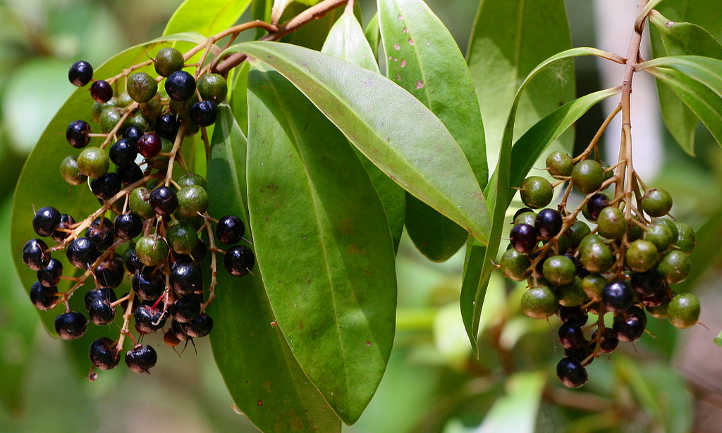
The coral ardisia propagates via three methods: seed, cuttings, or air layering.
Seeds for these plants tend to germinate well. There’s quite a few in each berry, and you can plant the entire berry. As the exterior breaks down, the seeds are sown and fertilized. Thin down to one plant per seedling pot as they germinate.
With cuttings, select a 6-8″ healthy, young segment. Trim it with sterilized pruning shears, and remove all but a few leaves at the top. You can dip it into your rooting hormone of choice and plant it. These will also develop roots if they’re set in a glass of water. And if you haven’t done this method of propagation before, you can read up on how to care for cuttings.
Air layering is a bit more complex to explain. We’ve got a fantastic piece on how to air layer plants that’ll tell you the entire process!
Repotting
As spring arrives, take a look at your plant. If it is starting to get rootbound, it may be time to repot it. Otherwise, leave it in its current pot until next year.
If it does need to be repotted, opt for a pot only one size larger than your current one. Remove the plant from its pot, making note of where the soil goes up to. Gently shake some of the old soil from its roots and loosen them with your fingertips.
Repot in the new pot in fresh, well-draining soil. Only cover to the depth it was at before. Water it in well, allowing excess to drain off.
Your used potting soil can be added to your compost pile. Alternately, blend it well with amendments to restore its life and reuse it.
Pruning
Choose to prune in late winter or very early spring, before the plant develops new growth. You should focus on shaping your plant to your desired shape and keeping it in check. Christmas berry plants are slow growing.
As the flowers fade and berries start to form, you have another choice to make. If you want the berries to produce a pop of color in late fall to winter, leave them be. But if you want to reduce the chances of it spreading, use a clean pair of pruning shears to snip off the flowers.
Christmas Berry Problems
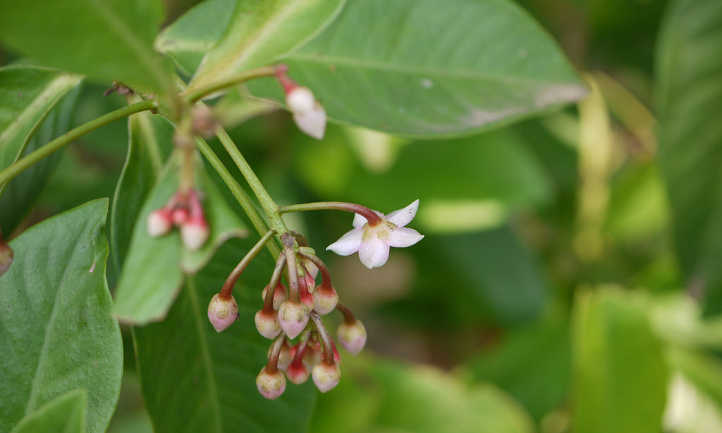
While no plant is 100% problem-free, you may discover that the coral ardisia plant is pretty close. Let’s discuss what few issues might come up so you’re ready to deal with them.
Growing Problems
The only real growing problems arise when one of two things happen.
If your plant has watering issues (too wet or too dry), you may have issues. I mentioned them briefly in the watering segment above. To prevent those, make sure that the soil is consistently moist but not soggy. Mulching can help keep the soil moisture from evaporating off too quickly.
Otherwise, the biggest problem I encounter is when the berries fall to the ground. If stepped on, the tiny seeds can get stuck to the bottom of shoes or bare feet and can be spread around the yard. You may have a sudden wave of young seedlings in the spring. Avoiding this problem’s easy: clip off the berry clusters before they ripen.
Pests
Pests on ardisia plants are almost completely unknown. This contributes to their invasive nature, unfortunately. Nothing seems to find it really tasty!
But having said that, there are some things that may be found near your shrubs. Let’s go over those.
Leafcutter ants find the leaves to be useful for growing leaf mold. If your region is prone to leafcutter ants, you’re likely to find some marching up your tree. Arborist sticky paint will prevent them from going up the trunk.
Birds seem to adore the coral berries. They will pluck them off the plant or ground and gobble them up, and carry some off for later. Unfortunately, this results in seed spread. If you want to prevent the spread of the seeds around your area, prune the berries before they’re ripe. Watch for raccoons as well, they may find the berries tasty too!
Ever an opportunistic pest, mealybugs may make a home in the leaves of your Christmas berry bush. Keep them at bay with the occasional spray of neem oil on all leaf surfaces.
Diseases

The single weakness which your assortment of ardisias might encounter is fungal root rot. There’s many fungi which thrive in overly-wet soil, and these can wreak havoc on plant roots.
If your soil seems more like mud than soil, and doesn’t drain away excess moisture, you’re at risk. The fungi will spread within your soil and can attack your plants. Rot can rapidly form and cause your plants to yellow, wilt, and die.
Soil mycorrhizae can help defend your plant’s roots from many fungal diseases. Your best defense, though, will be to ensure the soil is consistently moist but not wet. Something which is about as damp as a wrung-out sponge is ideal.
Yes, they can be invasive, but the Christmas berry can also be a great addition to an indoor garden. So don’t let their nature intimidate you! With good management, you’ll have a beautiful shrub to enjoy all year long.

